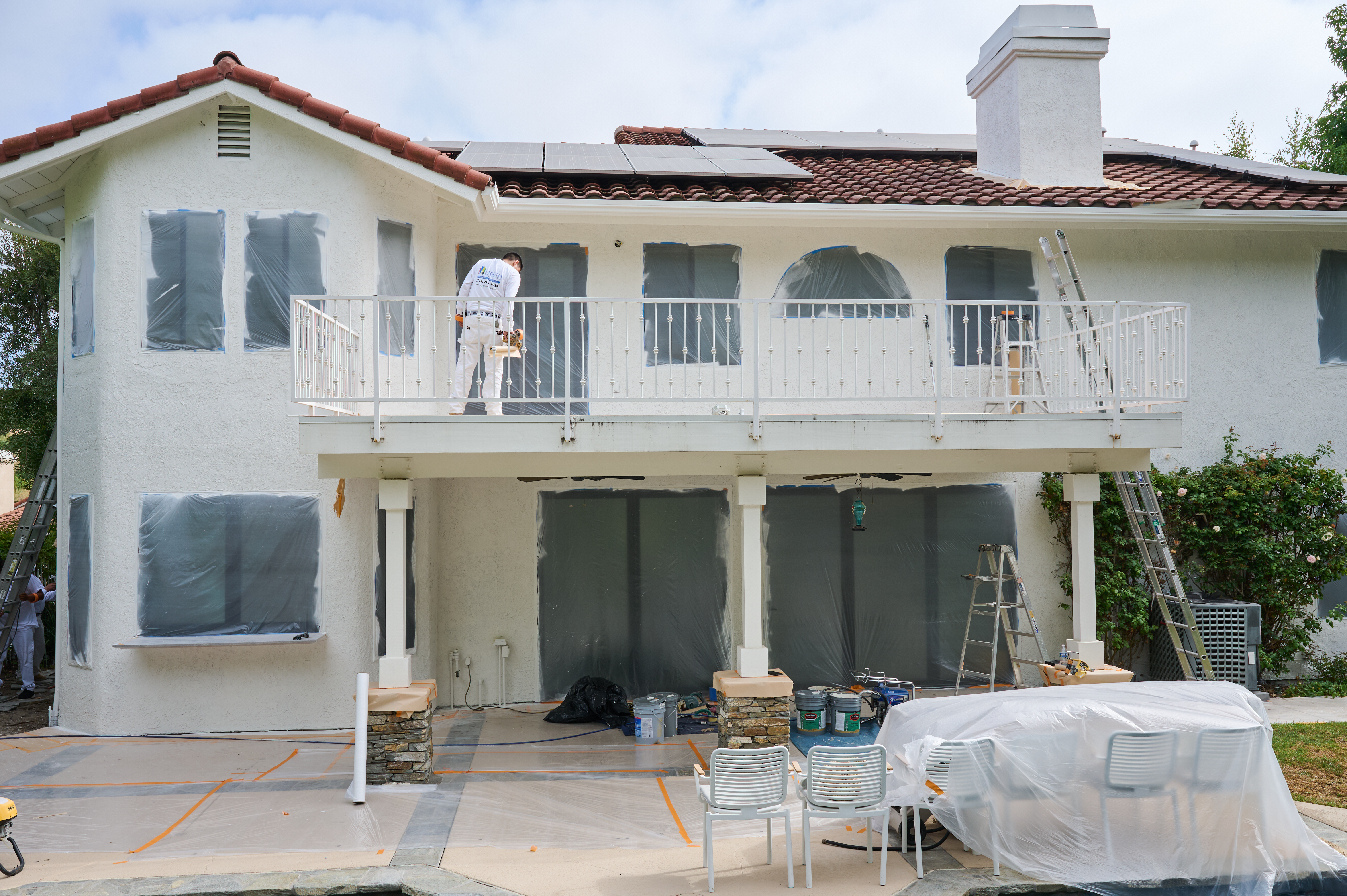
The cost to paint a deck depends on its size, design, and whether you DIY. Read this guide to help set the budget for your deck painting project.
A new coat of paint can work wonders for your curb appeal


Painting vinyl siding costs $3,180 on average.
It's more budget-friendly to paint, rather than replace vinyl siding.
Painting your vinyl siding can extend its lifespan by five to 10 years.
In some cases, replacing your home's siding is the better option.
If your home looks like it needs a little TLC, you may be wondering if you can paint your vinyl siding. While painting vinyl siding can be a good way to refresh your house, it won't be the right choice in all cases. Learn more about the pros and cons of painting vinyl siding to see if it's the best option for you.
When taking on this project, expect questions only a pro can answer. With our network of local pros, you'll get the job done and your questions answered—without the hassle and stress of doing it yourself.
When you paint vinyl siding, either you or a local professional exterior painter apply multiple coats of paint to your home's siding. While vinyl siding is designed to be long-lasting, it can fade over the years. Painting it gives it a new look without the added time and expense of completely removing and replacing it. If you decide to paint your vinyl siding, proceed with caution, as choosing the wrong paint can lead to problems.
| Pros | Cons |
|---|---|
| Gives a custom look | Can cause warping |
| Budget-friendly upgrade | May void siding’s warranty |
| Improves durability | Won’t correct damage |

Painting vinyl siding can make your home stand out and give it a refreshed appearance. Another benefit of painting vinyl siding is that the cost of painting a house is much less than the cost of replacing the siding. Learn more about the pros of painting.
Don't underestimate the value of a new coat of paint, especially when it comes to boosting your home's curb appeal and giving it a custom appearance. While you may not have unlimited options when it comes to the paint color you choose, you will have more choices compared to the colors available in vinyl siding.
Painting the siding lets you put your personal stamp on your home without too much time and expense. If you decide to sell later, you can always paint again, choosing a more neutral color.
Replacing vinyl siding costs an average of $11,520, nearly four times as much as the average cost to paint a house, which is $3,180. Even if you hire a pro to do the work for you, you'll still pay considerably less to paint, rather than replace, the siding.
Think of vinyl siding as an additional layer of protection for your home, almost like a sort of sunscreen for your house. A fresh coat of paint extends the life of your siding by an extra five to 10 years because it gives it extra protection against UV damage, rain, and wind exposure.
Painting your home often requires getting on a ladder, which can be dangerous. Have a friend hold you steady or entrust the job to a painting professional to ensure your safety.
Painting isn't always the right choice for your home's siding. A poorly done paint job can cause more trouble than it's worth. Additionally, paint won't be the answer if your siding is very old and worn out. Learn more about the drawbacks of painting vinyl siding.
Depending on the age of your siding, it may still be under warranty. However, a fresh coat of paint may void that warranty. Before you break out the paint and rollers, read over the terms and conditions of your siding’s warranty. Any damage you may be trying to hide with the paint may already be covered.
The wrong type of paint or a bad paint job can actually damage the siding. For example, if the siding isn't appropriately cleaned, the new paint can peel or flake off. The wrong paint is also likely to flake or peel.
The paint's color also makes a big difference. The best type of exterior paint for vinyl siding is light in color. Darker hues, such as deep blue or red, will absorb the sun's heat and UV rays, potentially causing the siding to warp.
If your home's siding has significant damage or overall wear and tear, painting it may be the equivalent of putting a bandaid on a large wound. However, replacing the siding completely will be the more cost-effective choice for major damage or significant wear in the long run.
What can you do to refresh your home without painting? A good power wash can refresh your worn-looking siding. Replacing the siding can also be a suitable alternative if it's at the end of its lifespan or in particularly rough shape. You can replace it like for like, trade one type of vinyl siding for another, or decide to use an entirely different material.
Alternatives to vinyl siding include:
Stucco
Engineered wood siding
Stone siding
Fiber cement siding
Choosing a different type of siding material may help you save money on your project. For example, the cost of aluminum siding can be lower than the cost of vinyl.
Painting vinyl siding can be the right option for your home, provided that the paint job won't void your warranty and will do more good than harm. Choosing the right paint for the job will make all the difference—you want a color that won't absorb too much heat and a paint material that will adhere to the surface.
From average costs to expert advice, get all the answers you need to get your job done.

The cost to paint a deck depends on its size, design, and whether you DIY. Read this guide to help set the budget for your deck painting project.

The cost to paint vinyl siding depends on the type of paint, square footage, labor, and more. Check out this guide to help you budget for painting vinyl siding.

The cost of materials and labor all factor into your overall brick staining cost, but what other factors impact the bottom line? Our guide covers this and more.

Can you paint pressure-treated wood? Learn why painting pressure-treated wood is a good way to extend the lifespan of the material.

Painting a brick house is a permanent renovation project that requires weighing the pros and cons. Keep reading to find out if you should paint your brick home.

The best time to paint a home’s exterior depends on where you live. Read this to learn more about when to paint your house.